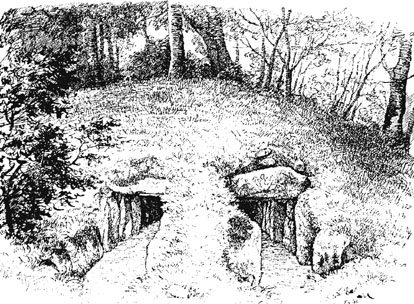

 | Page 418 |  |
some of the period’s more imaginative manifestations of archaeological enterprise. These included a body found in a bog at Haraldskjaer that was alleged to be that of Queen Gunhild, known as the wife of Erik Bloodaxe; and the dramatic Runamo runic inscriptions that—subjected to Worsaae’s critical scrutiny—proved to be not the work of humans but natural cracks and crevices. This caused a sensation because on this occasion a young student academically demolished some of the most eminent scholars of the time, as was confirmed later during a debate in the Academy of Sciences and Letters. By his effective and tactically well chosen criticism of a few examples of the erroneous and uncritical use of archaeological sources, Worsaae had achieved an important victory for the independence of the new science. This success was followed by a demonstration of how archaeological sources might contribute to the knowledge of prehistoric cultures, in Worsaae’s popular book, designed for the general reader entitled Danmarks Oldtid oplyst ved Oldsager og Grachøie [Denmark’s Prehistory as Revealed in Antiquities and Burial Mounds]. First published in 1843, the work was translated into German in 1844 and English in 1849. Built around Thomsen’s three-age system, it emphasized the inadequacy of written sources, argued against legendary traditions, proposed a process of culture-historical evolution, and gave the three ages an approximate dating.

A well-preserved Stone Age tumulus at Roddinge, Denmark, containing two chambers
(Ann Ronan Picture Library)
The period between 1850 and 1875 was a turning point for the development of the natural and historical sciences throughout Europe. In archaeology Thomsen’s three-age system was seen to be valid by the larger part of the scholarly and archaeological world. In Denmark itself archaeology was established as an independent discipline. Thomsen’s system was also developed chronologically, and dates were provided. The archaeological community in these decades was dynamic and open to new ideas, with no sharp divisions between professional and amateur archaeologists or between the various disciplines of social and cultural history. There was as yet no
 |  |